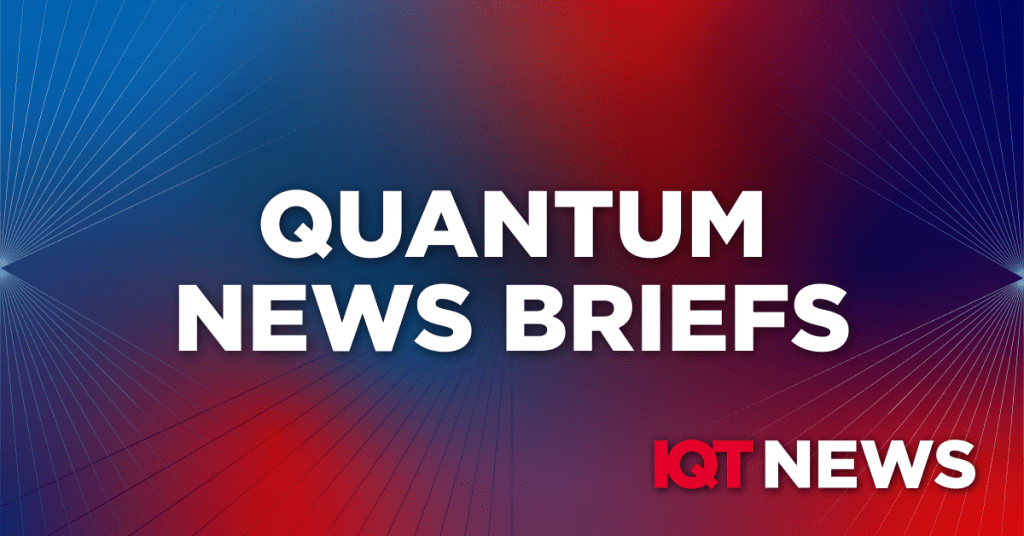Quantum News Briefs: March 26, 2024:
Multiverse Computing and cybersecurity experts at CounterCraft develop a quantum-inspired algorithm that improves cyber attack detection and opens AI’s ‘black box.’
In a new collaboration, researchers from Multiverse Computing and CounterCraft have developed a new quantum AI model, the Matrix Product State (MPS), demonstrating a significant advancement in attack detection capabilities over traditional cybersecurity methods. Leveraging network traffic and system logs datasets, the MPS model achieved a remarkable 100% attack identification rate, utilizing adversary-generated threat intelligence for cyberattack identification. This novel approach enhances interpretability and provides clearer insights into detected anomalies. The model, detailed in a paper submitted to arXiv, stands out for its reduction of false positives and improvement in explainability—an essential feature for meeting the demands of business users and regulatory compliance. Highlighting the importance of explainable AI, the MPS model marks a significant step towards the practical application of quantum techniques in strengthening cybersecurity defenses, offering a robust tool for detecting a broad spectrum of cyber threats while ensuring compliance with transparency regulations.
The Platform for Digital and Quantum Innovation of Quebec (PINQ2) and Hydro-Québec join forces to accelerate energy innovation
Hydro-Québec has joined forces with the Platform for Digital and Quantum Innovation of Quebec (PINQ2), becoming a partner in Canada’s first IBM Quantum System One, hosted at IBM’s Bromont facility. This partnership aims to leverage quantum computing’s potential in addressing complex challenges within the energy sector, such as demand forecasting and the development of sustainable energy systems. Hydro-Québec, a leader in utilizing artificial intelligence for data processing, sees quantum computing as a gateway to advancing research in material simulation and discovery, enhancing its capabilities in high-performance computing work. This collaboration with PINQ2, a non-profit organization, not only strengthens Hydro-Québec’s commitment to innovation and the energy transition but also positions it at the forefront of exploring quantum technologies for sustainable development solutions. The partnership highlights Hydro-Québec’s strategic intent to harness the rapidly evolving field of quantum computing in collaboration with PINQ2. It underscores the importance of quantum technologies in meeting future energy and sustainability challenges.
Archer and EPFL advance quantum technology with a new chip for precision sensing
Archer, in collaboration with the École Polytechnique Fédérale de Lausanne (EPFL) in Switzerland, has developed the p-ESR chip, marking a significant advancement in their quest to create quantum computing devices. The p-ESR chip is poised to play a crucial role in controlling and reading qubits—quantum bits of information essential for quantum computing. This technology will allow Archer to conduct complex measurements and potentially manipulate the electron spin in its 12CQ quantum materials. Such advancements could pave the way for the development of quantum sensors, spectrometers, and analytical devices, furthering the capabilities of Archer’s 12CQ quantum chip project. Dr. Mohammad Choucair, CEO of Archer, highlights the p-ESR chip as a breakthrough in precision sensing and an essential step towards achieving quantum coherence at room temperature, a critical milestone for integrating quantum technology into mobile devices. This collaboration with EPFL exemplifies Archer’s fabless commercialization model, emphasizing the importance of industry partnerships in advancing research and development in quantum materials technologies.
ETH Zürich Researchers Develop New Ion-Trapping Approach For Quantum Computing Scaling
Researchers at ETH Zurich have made a pivotal advancement in the quest to scale up quantum computing by developing a new method for trapping ions using static magnetic and electric fields rather than traditional oscillating electromagnetic fields, published in Nature. This innovative approach enhances the control over an ion’s quantum state and position, a crucial step towards utilizing trapped ions as a scalable platform for quantum computation. The ETH team uses Penning traps—traditionally employed in precision spectroscopy and quantum simulations—to eliminate the heating issues and spatial restrictions associated with radio frequency fields in conventional ion trapping. Although the strong magnetic fields required for Penning traps present challenges, such as increased ion energy state spacing and the need for complex laser guidance systems, the ETH researchers successfully overcame these obstacles. They demonstrated prolonged ion confinement, precise control over ion movement, and maintained quantum coherence, opening the door to creating entangled states between different qubits. This breakthrough, highlighted by a microfabricated chip within a superconducting magnet and a sophisticated laser system, marks a significant leap forward in the potential for quantum computing scalability, aiming to extend these capabilities to multiple ions and multi-qubit gates.
Quantum Dots Developed at the University of Waterloo Ignite a New Era in Global Secure Communication
Researchers at the University of Waterloo’s Institute for Quantum Computing (IQC) have integrated two Nobel prize-winning technologies—entanglement and quantum dots—to efficiently produce nearly perfect entangled photon pairs. This result, achieved by embedding indium-based quantum dots in semiconductor nanowires, has resulted in a source that generates entangled photons 65 times more efficiently than prior methods. Entangled photons are crucial for quantum key distribution and quantum repeaters, technologies that promise to extend secure quantum communication globally and connect remote quantum computers. The IQC team overcame the historical challenge of fine structure splitting in quantum dots by using high-resolution photon detectors, allowing them to measure entanglement at any given moment precisely. This development opens up new possibilities for secure quantum communication, as demonstrated by the team’s successful simulation of quantum key distribution using their novel entangled photon source, marking a pivotal step towards realizing global-scale secure quantum networks.
Kenna Hughes-Castleberry is the Managing Editor at Inside Quantum Technology and the Science Communicator at JILA (a partnership between the University of Colorado Boulder and NIST). Her writing beats include deep tech, quantum computing, and AI. Her work has been featured in National Geographic, Scientific American, Discover Magazine, New Scientist, Ars Technica, and more.
